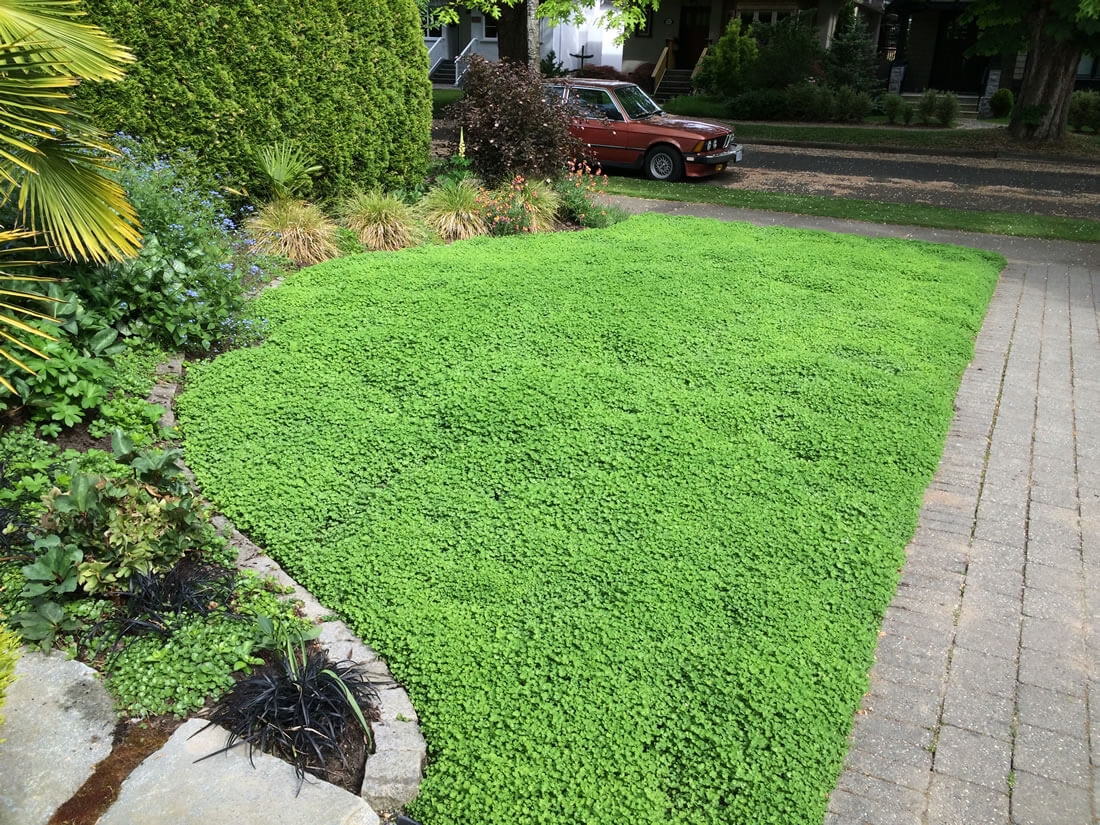
You’ll just want to mow your clover four to six weeks before the first frost to winterize your lawn. Letting your clover grow long can make your lawn a lovely, meadow-like space. Most turfgrasses need to be mowed weekly and sometimes even more frequently during periods of intense growth.Ĭlover solution: Clover needs few to no mowingsĭepending on your desired clover height and lawn look, you may want to mow your clover lawn a few times during the growing season, but you don’t have to. Plus, running a gas-powered mower is hardly eco-friendly. Mowing your lawn is a hassle, sucking time away from fun weekend activities. Grass headache #2: Your grass requires weekly mowings If your lawn has naturally moist, loamy soil, you won’t have to do much watering at all. However, once your clover is thriving, you’ll just have to water as needed. Sure, if you don’t have clover in your yard already, it’ll take a bit of work to establish your seeds. Turfgrass typically needs 1-1½ inches of water per week, and watering can be the last thing you want to do bright and early on your precious weekends or after a tough day at work.Ĭlover solution: Clover requires less water than traditional turfgrasses Grass headache #1: Your grass needs water Overseeding your existing lawn with clover is a great option that will retain your turfgrass look while giving you the benefits of clover.
#Clover lawn full
You can make a full switch to clover, or you can plant clover seeds along with grasses. If you’re sick of lawn maintenance eating into your precious weekends, clover’s got you (ground) covered. Following the clover pathĬlover offers a host of solutions to common turfgrass lawn problems. Now, it’s making a comeback as homeowners rediscover its benefits. Clover gained a reputation as an ugly, undesirable weed. It fell out of favor in the 1950s as broadleaf herbicides entered the picture.īroadleaf herbicides kill pretty much every plant besides grass, so as chemical companies pushed more herbicides into the eager hands of homeowners, the “ideal lawn” became a clover-free one. It used to be a popular choice for homeowners: You couldn’t find a lawn without it. Clover wasn’t considered a weed until about 50 years ago. Recommended pairings: Tall fescue or Kentucky bluegrass.It also doesn’t clump as easily as white clover, so it blends well with other grasses. It has smaller leaves and fewer flowers than white clover, and it grows lower to the ground (4-6 inches tall). Microclover is a new cultivar of white clover that is becoming very popular.Recommended pairings: Perennial ryegrass, white clover, sweetclover, Bermudagrass, or tall fescue.It grows taller than white clover, with a height ranging from 6-24 inches. Red clover is beloved for its pretty reddish purple flowers, elegant stature, and natural health benefits.Recommended pairings: Annual ryegrass, red clover, Kentucky bluegrass, Bermudagrass, hard fescue, or red fescue.White clover varieties range from 4-8 inches tall. It also produces attractive white flowers that pollinators adore. It’s a low-growing, rapid spreader that easily outcompetes weeds and thrives in poor soil. White clover is the most well-known clover in the U.S.Though you can grow a single-species clover lawn, most experts recommend that you mix clover with traditional grass or with a variety of different clover species for an even, lush lawn. We’ll focus on the three varieties gaining popularity in cool-season lawns: white clover ( Trifolium repens), red clover ( Trifolium pratense), and microclover ( Trifolium repens var. Within the U.S., it’s concentrated in cooler regions in the Northeast, Northwest, and Midwest. With over 300 species available, clover grows worldwide. It’s a legume, in the same family as peas, peanuts, and beans. Because of its nitrogen-fixing abilities, clover is considered a living mulch. Clover then became popular for use in lawns - until it was shunned as a weed.Ĭlover has a secret superpower: It can fix nitrogen for other plants (and itself), providing a natural boost of fertilizer. It’s native to the Mediterranean but traveled to America in the 1600s, where it quickly became a favorite among farmers as a cover crop and livestock forage. Grass headache #10: It’s hard to grow grass in shady spotsĬlover is a dense ground cover known for its shamrock-shaped leaves and pollinator-friendly flowers.Grass headache #9: Weeds and pests are infiltrating your lawn.Grass headache #8: Your grass isn’t attracting butterflies or bees.Grass headache #7: You have to aerate your lawn.Grass headache #6: Grass seed is expensive.



Grass headache #5: Your grass requires herbicides and pesticides.

Grass headache #4: Your grass needs frequent fertilizer applications.Grass headache #3: Your grass can’t handle the heat.Grass headache #2: Your grass requires weekly mowings.Grass headache #1: Your grass needs water.


 0 kommentar(er)
0 kommentar(er)
